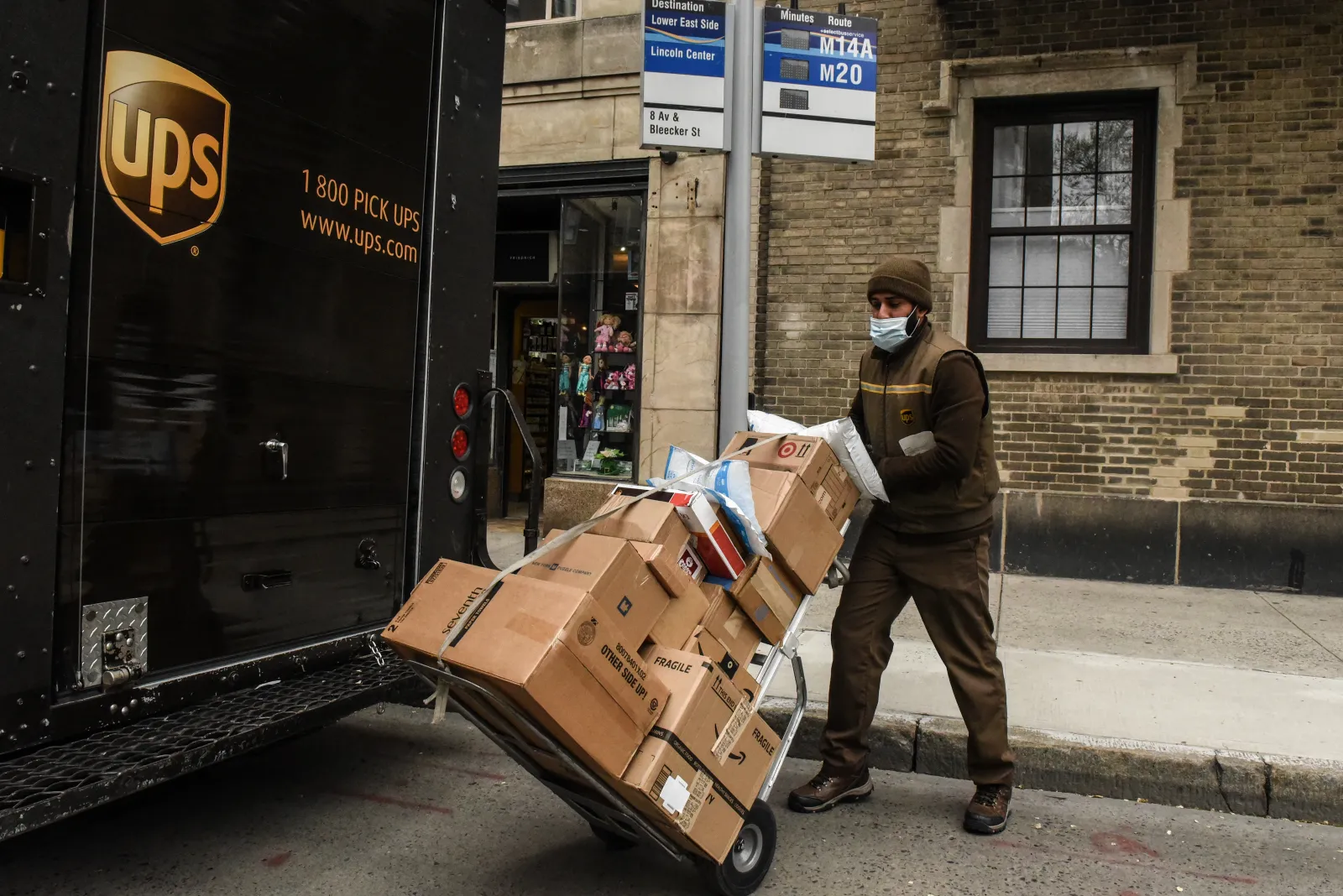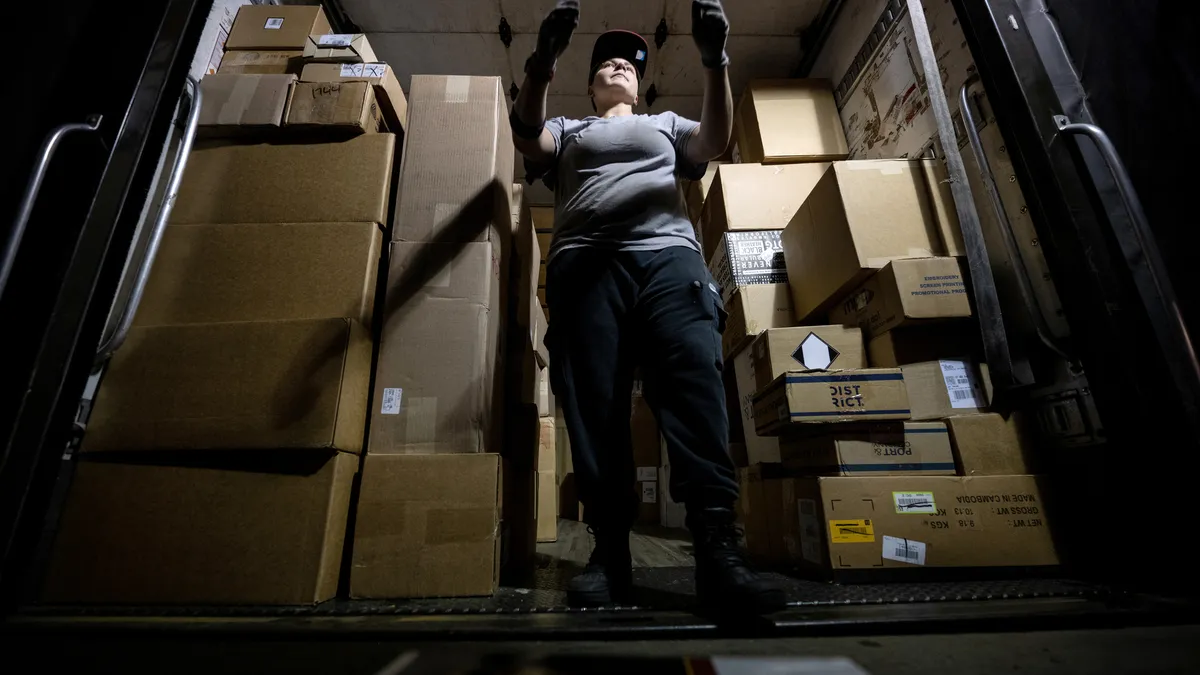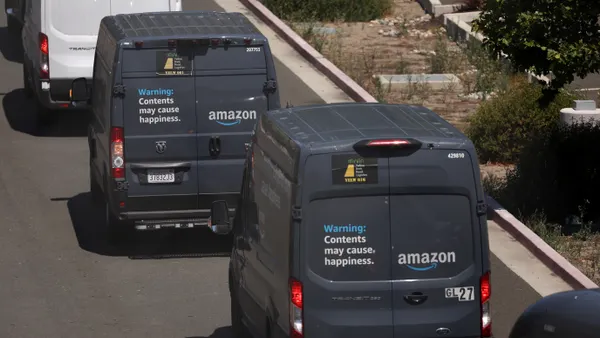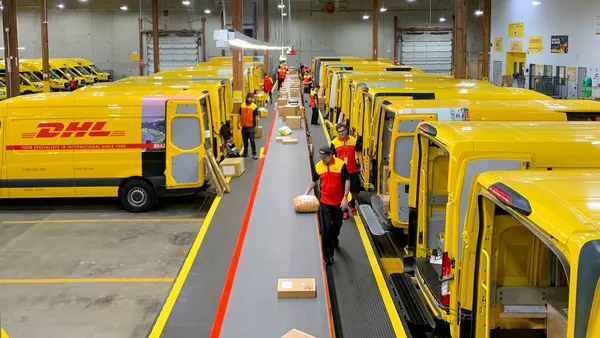Tusk Logistics co-founder and CEO Ben Emmrich longs for a day when parcel shipping rates adjust dynamically based on supply and demand.
"It's absurd that our industry hasn't been able to get there yet in a meaningful way," he said.
As Emmrich envisions it, dynamic pricing would benefit both carriers and their customers. If a carrier is under capacity and has extra space in their network, it could lower prices to attract more volume. If capacity is tight, it could increase prices to tamp down demand.
Reaching those capabilities is a tall order for the industry. Today, base shipping rates are a static affair until carriers roll out their annual price hikes.
However, FedEx and UPS have already been making strides toward dynamic pricing over the past year, and they plan to further implement it in their operations going forward.
Delivery giants advance pricing programs
Experts say FedEx and UPS already leverage surcharges to hike prices in a dynamic fashion.
Added fees, like UPS' demand surcharge, have become more prevalent in recent years since the pandemic-fueled home delivery boom strained carriers' networks. While a lot of shipper contracts have limits on how much rates can increase, those caps generally don't apply to surcharges, said Transportation Insight Chief Strategy Officer John Haber.
"COVID hit, and all of a sudden we saw an influx of new charges," Haber said. "You have that annual rate increase, everybody's still doing that, but then there are changes to pricing that are made way more often."
The two delivery giants are now advancing their capabilities beyond tacking on surcharges during high-demand periods.
FedEx, for example, used a dynamic pricing program to help bring in $150 million in profit from home delivery fees during peak season. Its surcharges adjusted weekly based on how much more volume customers shipped versus earlier in the year.
The company isn't stopping there — it aims to launch new dynamic pricing capabilities every ten weeks, Chief Customer Officer Brie Carere said during a June presentation to investors.
"You can imagine some of the obvious ones would be more day-of-week pricing, more customized in certain hotspots or constraints to work around them from a pricing perspective," said Carere, who is also an executive vice president at the company.

UPS, meanwhile, is progressing toward dynamic pricing after the launch of Deal Manager last year. The digital platform aims to make it easier for small and medium-sized businesses to reach shipping deals with UPS, rather than going through a manual pricing process, CEO Carol Tomé said in an April 2022 earnings call.
Deal Manager does this by leveraging pricing science, allowing customers to skip submitting sample data in the quoting process and salespeople to close deals quickly.
"Because this platform uses advanced analytics, the more we use it, the smarter it becomes," Tomé said. "It's a key building block toward dynamic pricing."
The CEO provided an update on Deal Manager in a January earnings call, saying the company's "win rate" in the U.S. with the platform was 22 percentage points higher than its baseline. UPS is pushing to expand Deal Manager access to more than 40 countries this year.
Tomé also noted that UPS recently launched a pilot enabling "systematic day-of-week pricing."
"Early feedback is promising, and we'll share more updates on this pilot on future calls," she said.
Dynamic pricing's next steps — and limitations
The next step in carriers' dynamic pricing journey could have a variable charge based on the street or ZIP code the carrier is delivering in, said Dean Maciuba, managing partner USA at Crossroads Parcel Consulting. He used New York City as an example of a metro area that's difficult to deliver in — FedEx and UPS have dealt with heavy parking fines in the city through the years — and could draw higher pricing as a result.

While Maciuba added that dynamic pricing is unlikely to create significant increases in shipping costs, he believes the practice will benefit carriers in the long run.
"I don't think you're talking 5% or 10% [price increases]," Maciuba said. "I think you're talking 1% to 3% swings. But the key is, if you look at that cost across the U.S., it's significant in terms of the bottom line."
Despite the potential for further advancement, there will be limits to what major carriers will institute in terms of dynamic pricing, said Thomas Andersen, partner and executive vice president of supply chain services at LJM Group.
For example, he doesn't expect shippers will end up having to pay a different price each day for the same service due in part to contractual commitments. Under those circumstances, a shipper may hold onto certain packages until prices drop.
Additionally, Andersen said price changes would be easier to institute across the board rather than making market-by-market adjustments to account for, say, staffing issues at a specific distribution center constraining throughput.
"I think it'd be too limited and too difficult and too much pushback for the reward," Andersen said.















